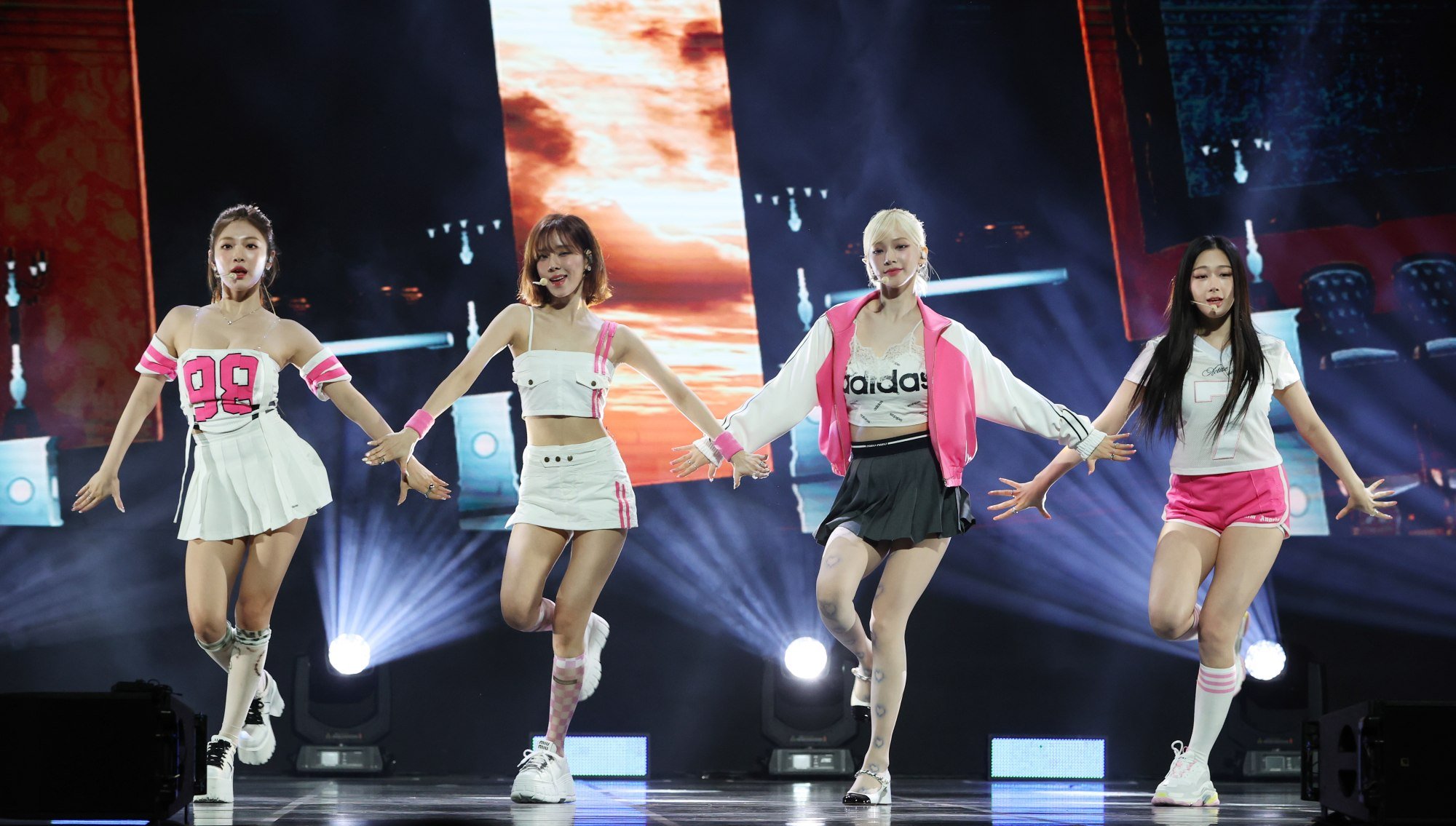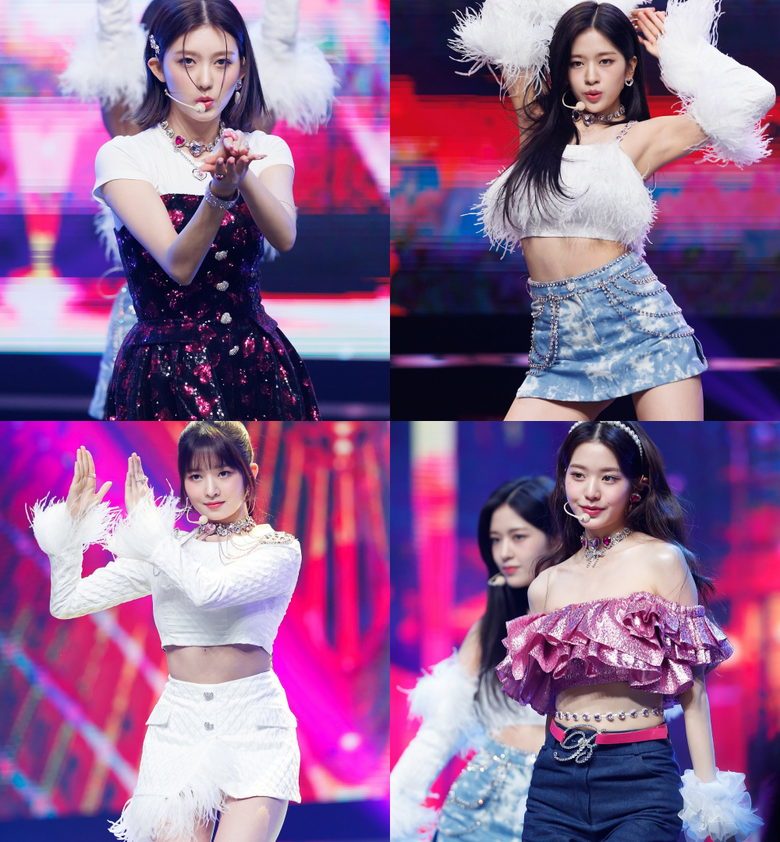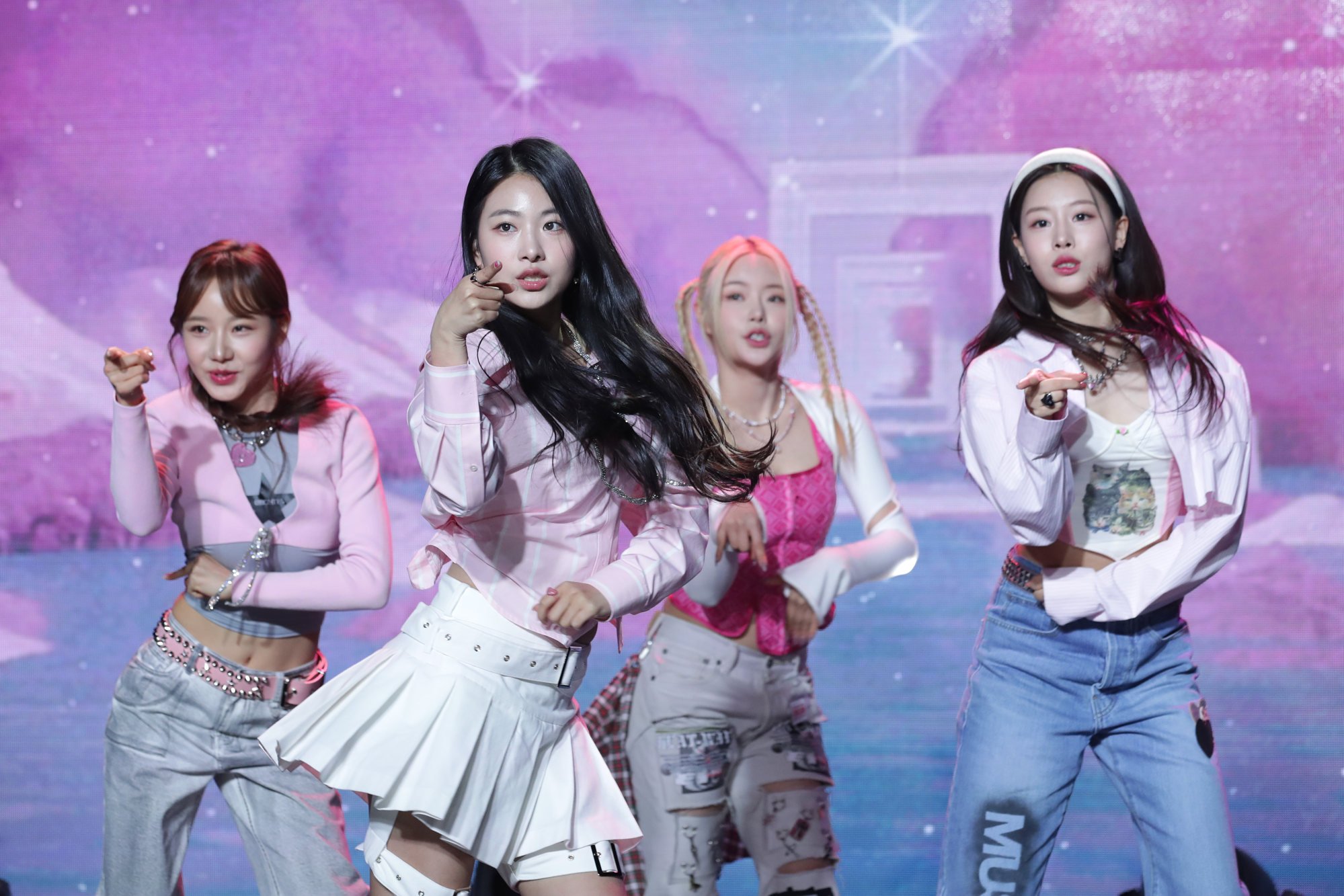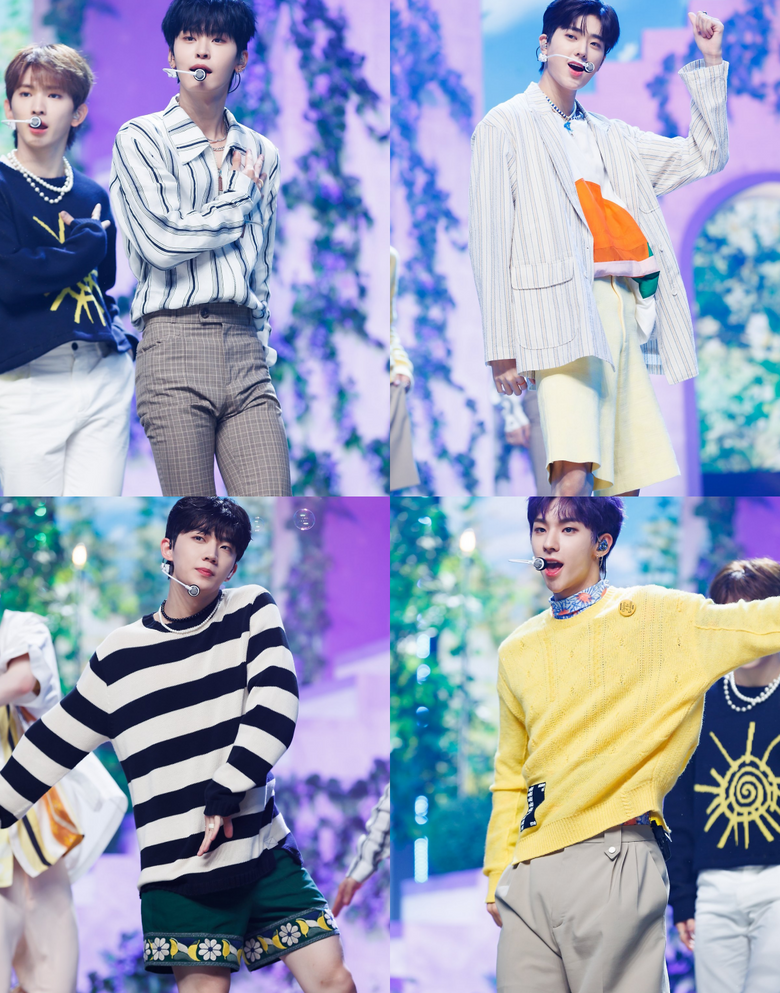K-POP Fashion, Uncategorized
K-Pop Stage Outfits A Visual Feast
From dazzling performances to catchy music, there’s no doubt that K-pop has taken the world by storm. But beyond the glitz and glamour, another aspect that sets K-pop apart from other genres is its elaborate and eye-catching stage outfits. These outfits not only serve as a visual spectacle for fans, but also play a crucial role in creating a distinct identity for each group. In this article, we’ll take a closer look at the world of K-pop stage outfits and explore their importance, design process, impact on fashion, and more.
10 K-Pop Stage Outfits That Will Make You Dance

K-pop stage outfits are truly a sight to behold. They are designed to be visually striking, colorful, and unique, often incorporating elements of traditional Korean clothing, Western fashion trends, and even anime and manga characters. Here are 10 iconic K-pop stage outfits that have captured the hearts of fans worldwide:
1. BTS – “Blood, Sweat, Tears” (2016)
Known for their boundary-pushing fashion choices, BTS stunned audiences with their black and white ensembles in “Blood, Sweat, Tears”. The group’s stylists successfully combined traditional Korean hanbok-inspired jackets and pants with modern elements such as ripped jeans and leather boots.
2. BLACKPINK – “DDU-DU DDU-DU” (2018)
In their music video for “DDU-DU DDU-DU”, BLACKPINK made a statement with their edgy and fierce stage outfits. The group’s stylists mixed high-fashion pieces like corsets and oversized blazers with bold accessories, creating a memorable and powerful look.
3. TWICE – “Fancy” (2019)
TWICE took on a retro concept with their “Fancy” stage outfits, featuring sparkly mini dresses and matching boots. The group’s stylists also incorporated elements of old-school school uniforms, adding a touch of nostalgia to their performance.
4. EXO – “Love Shot” (2018)
For their performance of “Love Shot”, EXO’s stage outfits were a perfect blend of sophistication and masculinity. The group’s stylists dressed them in sleek black suits with gold accents, highlighting each member’s individual charm.
5. Red Velvet – “Psycho” (2019)
In their music video for “Psycho”, Red Velvet showcased a softer yet equally stunning look with their angelic white gowns. The group’s stylists added intricate details such as feathers and pearls, giving off a dreamy and ethereal vibe.
6. SEVENTEEN – “Don’t Wanna Cry” (2017)
SEVENTEEN’s performance of “Don’t Wanna Cry” featured all-black outfits with pops of color from their accessories. The group’s stylists also incorporated different textures and layers, creating a visually interesting look that perfectly complemented the song’s emotional lyrics.
7. MAMAMOO – “Egotistic” (2018)
MAMAMOO’s stage outfits for “Egotistic” were a nod to traditional Korean clothing, featuring bold and vibrant hanbok-inspired pieces. The group’s stylists also added modern twists such as crop tops and high-waisted pants, making the outfits a perfect combination of old and new.
8. NCT – “Black on Black” (2018)
NCT’s “Black on Black” performance was a showcase of chic and sleek stage outfits. The group’s stylists dressed them in all-black ensembles with leather jackets and harnesses, giving off a cool and edgy vibe that perfectly matched the song’s intense choreography.
9. GFRIEND – “Me Gustas Tu” (2015)
GFRIEND’s “Me Gustas Tu” stage outfits were an embodiment of the group’s girly and innocent concept. The group’s stylists dressed them in pastel-colored dresses with bows and ruffles, creating a dreamy and romantic look.
10. TXT – “Crown” (2019)
In their debut music video for “Crown”, TXT’s stage outfits featured a mix of casual and formal pieces. The group’s stylists paired denim jackets and shorts with dress shirts and blazers, creating a youthful and trendy look that matched the song’s upbeat vibe.
The Evolution of K-Pop Stage Outfits: From Traditional to Contemporary

The concept of stage outfits in K-pop has evolved over time. In the early years of K-pop, groups often wore matching outfits or school uniforms, reflecting the innocent and cutesy image that was popular during that time. However, as the industry grew and became more competitive, groups began to experiment with different styles and concepts, including incorporating elements of traditional Korean clothing.
One example of this is the hanbok, a traditional Korean garment characterized by its vibrant colors and intricate designs. K-pop groups such as EXO, MAMAMOO, and BLACKPINK have all incorporated hanbok-inspired pieces into their stage outfits, giving these traditional garments a modern twist and introducing them to a global audience.
Another trend that has emerged in recent years is the use of high-fashion brands and designer pieces in K-pop stage outfits. This not only adds to the visual appeal of the performances but also helps to elevate the status of K-pop as a fashion powerhouse in the global market. Some groups, like BTS, have even collaborated with luxury brands to create custom-made stage outfits, further solidifying their influence in the fashion industry.
Overall, the evolution of K-pop stage outfits reflects the changing trends and preferences of both the industry and the audience. From traditional to contemporary, each group’s stage outfits are a representation of their unique identity and style.
Behind the Scenes: The Creative Process of K-Pop Stage Outfits

Designing K-pop stage outfits is a collaborative process between the group’s stylists and the members themselves. The stylists are responsible for creating the overall concept and vision for the stage outfits, while taking into consideration the group’s music, choreography, and image.
In an interview with Billboard, Yechan Kim, one of BTS’ stylists, shared that the process starts with conversations with the members to discuss what styles and colors they like and what kind of image they want to portray. From there, the stylists come up with several designs and present them to the group for feedback and suggestions.
The members also play an active role in the creative process, often giving input on the design and suggesting changes or additions to make the outfits more suitable for their performance. This collaboration ensures that the stage outfits not only look good but also feel comfortable and functional for the group to perform in.
The Impact of K-Pop Stage Outfits on Fashion

One cannot talk about K-pop without mentioning its influence on fashion trends. K-pop stage outfits have become synonymous with bold and innovative fashion choices, often setting the bar for upcoming trends and inspiring fans around the world to incorporate them into their own wardrobes.
One example of this is the use of accessories such as chokers, harnesses, and statement earrings, which have become popular among K-pop fans after seeing their favorite idols wear them during performances. Another trend that has been heavily influenced by K-pop is the use of gender-neutral clothing, breaking free from traditional gender norms and promoting self-expression through fashion.
K-pop’s global reach has also helped to promote Korean designers and brands, showcasing their talent and creativity to an international audience. In fact, many K-pop idols have been appointed as brand ambassadors for luxury fashion brands, further cementing their impact on the fashion industry.
Breaking Down the Elements of a K-Pop Stage Outfit

K-pop stage outfits can be broken down into several elements that work together to create a cohesive and impactful look. These elements include:
Colors
Colors play a crucial role in creating an eye-catching stage outfit. Bright and vibrant colors are often used to attract attention and reflect the energetic and dynamic nature of K-pop performances. For slower and more emotional songs, softer and pastel colors may be used to convey a different mood.
Silhouette
The silhouette of a stage outfit is also important, as it affects how the outfit looks when the group is performing choreography. Most K-pop stage outfits are tailored to be form-fitting, allowing for ease of movement while dancing and showcasing the members’ toned figures.
Accessories
Accessories are often used to add that extra oomph to K-pop stage outfits. From statement jewelry to belts, hats, and even props, these accessories not only complement the overall look but also help to enhance the performance.
Hair and Makeup
Hair and makeup are just as important as the outfit itself. They contribute to creating an overall image and help to bring the concept and style of the stage outfit to life. In some cases, hair and makeup may even change throughout a performance to reflect different parts of the song or dance routine.
How K-Pop Stage Outfits Create a Memorable Performance
K-pop stage outfits are designed not just to look good, but also to help enhance the group’s performance. By carefully considering factors such as color, silhouette, and accessories, stylists are able to create outfits that not only showcase the members’ individual charms but also work well together as a group.
In addition, well-designed stage outfits can make it easier for idols to move around and perform complex dance routines. The outfits are tailored to fit each member’s body and allow for ease of movement, ensuring that they can perform at their best without any wardrobe malfunctions.
Moreover, K-pop stage outfits contribute to creating a cohesive and polished performance. Each member’s outfit is carefully curated to complement the others, making the group look like a unified and synchronized team on stage.The Role of Stylists in Creating Iconic K-Pop Stage Outfits

Stylists play a crucial role in shaping a group’s image and creating memorable stage outfits. They work closely with the members to understand their preferences and personalities, and use that to come up with outfits that not only look good but also reflect the group’s identity.
In addition, stylists also have to keep up with the latest fashion trends and constantly come up with new and innovative ideas to keep the group’s style fresh and exciting. They also have to consider practical factors such as budget and the availability of certain fabrics and materials, while still meeting the expectations of fans and the industry.
The Cultural Significance of K-Pop Stage Outfits
K-pop stage outfits not only showcase the creativity and talent of the group’s stylists, but also hold cultural significance. Through incorporating elements of traditional Korean clothing into their outfits, K-pop groups are able to promote and preserve their country’s heritage and culture to a global audience.
Moreover, by showcasing different styles and concepts, K-pop is able to bridge cultures and bring people from different backgrounds together. In fact, many fans around the world have been inspired to explore and learn more about Korean culture through their love for K-pop and its unique stage outfits.
The Psychology Behind the Visual Appeal of K-Pop Stage Outfits
The impact of K-pop stage outfits goes beyond just the physical appearance. There are psychological reasons why these outfits are so visually appealing and captivating.
One factor is the use of bright and vibrant colors, which evoke positive emotions and create a sense of excitement and energy. These colors also make the performers stand out and catch the audience’s attention.
Another factor is the use of coordinated outfits that create a sense of unity and connection between group members. This can be especially appealing to fans who see the group as a family or a community.
Lastly, the use of unique and eye-catching designs can create a sense of exclusivity and make the audience feel like they are part of something special and exclusive, further adding to the appeal of K-pop stage outfits.

The Future of K-Pop Stage Outfits: Trends and Innovations
As K-pop continues to evolve and push boundaries, we can expect to see even more creativity and innovation when it comes to stage outfits. One trend that is gaining popularity is the use of technology, such as LED lights and interactive elements, in stage outfits.
For example, during their performance at the 2018 Pyeongchang Olympics closing ceremony, EXO wore futuristic-looking suits with LED lights that changed color throughout their performance. This not only added a visual spectacle to their performance but also showcased the group’s use of technology in their music and fashion.
Moreover, with K-pop’s growing influence on global fashion, we can also expect to see more collaborations between K-pop idols and luxury brands, as well as an increase in Korean designers being featured in international fashion shows.
Conclusion
K-pop stage outfits are more than just clothes – they are an integral part of the industry’s identity and success. From traditional to contemporary, these outfits reflect the growth and evolution of K-pop and its influence on fashion and culture. With a team of dedicated stylists and the creativity and talent of each group, we can only expect to see even more iconic and memorable stage outfits in the future.
